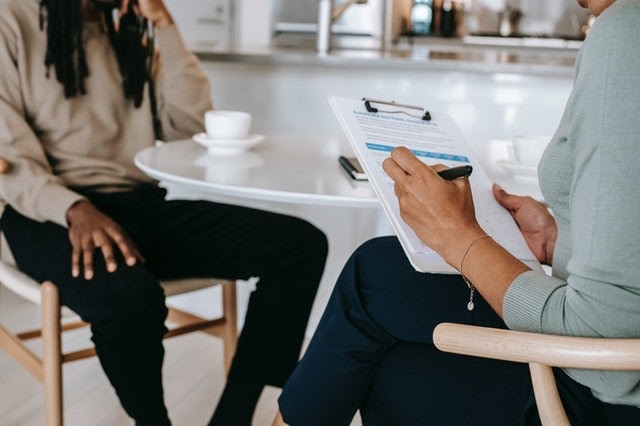Last updated on: May 20, 2025
Call Us at 1-877-857-9002
OR
Nonprofit Human Resources Best Practices
Nonprofit leaders understand the importance of recruiting, hiring, and retaining high-quality personnel. After all, it is through the dedication and commitment of employees that a nonprofit’s mission is implemented in the community. Therefore, nonprofit human resources staff are essential for maintaining the staffing pipeline.
This article highlights some of the nonprofit human resources best practices for sourcing and keeping employees that are an excellent match for their organizations.
Defining Staffing Needs
Whether you’re launching a nonprofit startup or growing a well-established organization, it can be tempting to quickly hire individuals who “seem good” based on their resume or a personal connection. However, it will serve the organization better in the long run to identify precisely what skills and qualities are needed to meet your staffing needs.
Areas to define in detail include:
- Technical skills (such as computer skills, writing, or budgeting)
- Interpersonal skills (such as community organizing, fundraising, customer service)
- Personal alignment to the organization’s mission and culture
Nonprofit HR Solutions: Creating Accurate Job Descriptions

After defining a group’s staffing needs, nonprofit human resources staff should work with the hiring manager to ensure the job description is detailed and accurate.
A clearly defined job description helps attract candidates who are a good fit and quicker work of vetting incoming resumes.
An effective job description should include:
- Overview of the organization and its mission
- Job title and department
- Summary of roles and responsibilities
- Inclusion of managerial or supervisory duties
- Detailed list of responsibilities
- Experience, skills, and necessary competencies
- Any geographical, travel, physical, or licensing requirements
Once the job description is finalized and approved, it is considered nonprofit human resources best practices to create a matrix used for assessing resumes and determining which candidates should move forward to the interview stage.
Interviewing Candidates

One of the essential roles nonprofit human resources staff play is assessing candidates during the interview process. After screening resumes through the position matrix, the hiring manager should be presented with a shortlist of candidates to interview virtually or in person. A mix of specific skills questions, behavioral scenarios, and questions about past employment all make the interview process most effective. Once the hiring manager makes an offer to the top-ranked candidate, and the candidate accepts, having a 90-day probationary period helps ensure the “fit” is best for both the organization and the new hire.
Nonprofit HR Solutions for Staff Compensation & Benefits On Compensation

Fair and competitive compensation is a significant concern for a nonprofit human resources office. An organization with insufficient compensation or payroll inconsistencies will experience difficulty attracting and retaining staff.
Further research on nonprofit human resources best practices for salaries can be found at our partner site, BryteBridge’s Nonprofit Studies.
On Employee Benefits
While the nonprofit human resources office may face budget constraints that limit salaries or hourly wages, they can exercise more creativity and flexibility when providing benefits. Additional benefits to consider adding into an employee’s total compensation package include health insurance, vacation, sick, or personal time off, retirement or savings plans, flexible work arrangements including working from home or remotely, free parking or public transportation discounts, child or elder care services, time off for volunteering, collaborative benefits from other nonprofits, and professional development opportunities. In addition, understanding what current employees value and desire can help ensure your benefits mix resonates with the talent you wish to attract.
Developing In-House Talent
A nonprofit’s greatest assets are its employees, nonprofit volunteers, donors, and its board, and developing in-house talent is one of the best investments a nonprofit human resources office can make. Providing professional development benefits an organization in four ways:
- Employees’ new skills make for more efficient and effective program delivery.
- Increased employee satisfaction reduces staff turnover.
- Demonstrating a solid commitment to professional development is a great recruitment tool. High-quality candidates want to grow professionally and advance their skills and knowledge.
- Current employees can grow into more advanced roles (supervisor, manager, director) or transfer to positions in a different department within the organization (moving from front-line staff to fundraising, grant writing, website development, or marketing).
Nonprofit Human Resources Best Practices: The Early Bird Catches the Worm
When it comes to attracting and retaining top talent, advance planning is crucial. Being thoughtful and attentive to your organization’s mission and how that can intersect with employees’ wants and needs can help to bring in staff that can further advance your work in the community for years to come.
Get in touch with our nonprofit human resources experts to learn more about partnering with BryteBridge Nonprofit Solutions to make your recruiting and retention plans competitive. We provide successful nonprofit HR solutions and educational resources to organizations of all sizes and sectors.



